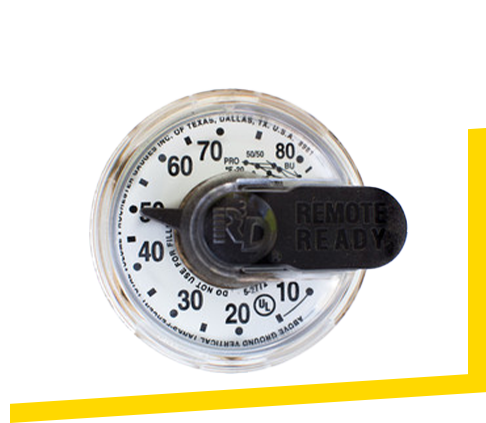Home » Residential » Read Your Gauge/Meter
Read Your Gauge/Meter
Curious to know how much propane is left or when you need to place an order? Here are some easy instructions on how to read your gauge.
Do We Service Your Zip Code?
How to Read a Propane Meter
Homeowners use propane to fuel their homes in several ways, from home heating to cooking and backup generator power. To ensure you always have enough propane for all your home energy needs, you must check your propane tank fuel gauge regularly. But, many customers might not know how to read a propane meter or where their gas gauge is located. That’s where the team at GasTec comes in—we can answer your questions, ensure you understand a propane gauge, and advise you on the correct way to read it. Not only is this crucial to confirm you always have enough fuel, but it’s also critical for the safety of you, your family, and your home. Below you will learn how to read a propane meter gauge to guarantee your family and home are always safe.
Understanding a Propane Gauge
For our 100lb propane tank systems, there is an automatic change over the propane tank level indicator connected between the two tanks. While these tank systems are great units for customers that have a relatively low annual usage, unfortunately, no manufacturers make them with a gauge. The regulator/indicator between the tanks will help you to know when it’s time to place an order. This system will draw the propane entirely out of one tank first. When this first propane cylinder runs empty, the flow of the propane will automatically switch and start drawing from the second tank (as long as it’s turned on). At the same time, a window with two colors will change. When the first tank has propane in it, it will show green. When that cylinder is empty, it will change to red.


If you notice the red flag, it’s time to request a delivery. Once our driver has either exchanged or filled up this tank, they will switch the indicator to point to the tank it is currently drawing from, resulting in a simple cycle of back and forth between the tanks. As a general rule or guideline, depending on your use, we suggest checking the propane tank level indicator once a week or a month to avoid a long time between the switchover. Occasionally, the indicator may not make a complete turn from green to red. If you see a flag with both red and green, chances are the indicator is reading empty.
For tanks that hold 50 gallons or more of propane, there may be a percentage gauge on them. In most situations, these gauges are under the lid of the tank, near the fill valve and the on/off valve. These gauges are read in a percentage of the remaining propane in the tank, usually close to gallons because propane tanks are not filled to 100% (see our FAQs for a description of how much your tank can hold). If you are on a will-call delivery basis, the best time to call (for the best pricing and to ensure your delivery is made before you run out of propane) is when the tank is approximately 30 to 40% full. Our will-call delivery times will range from about three to five business days after your request is received, year-round. We understand that sometimes you may miss this reading, or emergencies happen, like a generator turning on, so for those situations, we offer an emergency service delivery.
When to Replace Your Propane Tank
Do you know when to replace your propane tank vs. refilling it? If not, the experts at GasTec can help. For years we have delivered small-town service by maintaining a personal, working relationship with our clients in Bucks County, Montgomery County, Chester County, Delaware County, Lehigh County, Philadelphia County, PA and most of Central Jersey. As a full-service propane provider, we can support your home, industrial, or commercial space with several high-quality services—from powering a BBQ tank to heating a high rise in the winter. Connect with us at 888-449-3585 to receive unparalleled propane service any time of the year.
Request Service
Need a refill? Have questions or comments?
Leave us a message and we will respond as quickly as we can!
(This form is NOT for emergency situations or requests - please call)
"*" indicates required fields
